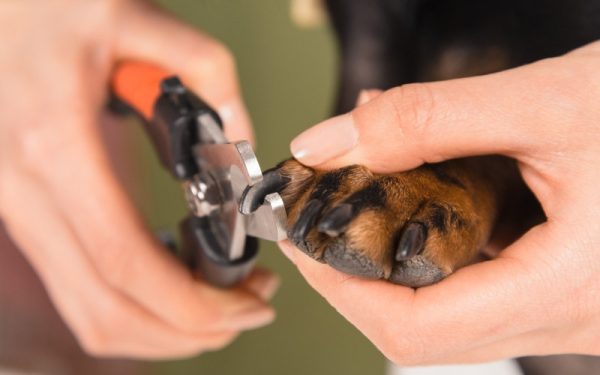Pugs are excitable, cheeky companions that are famed around the world for their unique appearance. They are popular in all their main colors, including black, tan, and fawn, but there have been breeders that have started introducing merle coloring.
Merle Pugs are rare, and how a Pug gains a merle coloring is interesting and complex. In this article, we explore how Merle Pugs came to be and what owning one looks like. Read on to discover all there is to know about these mischievous dogs.
Breed Overview
Height:
10–13 inches
Weight:
14–18 pounds
Lifespan:
13–15 years
Colors:
Merle
Suitable for:
Families looking for a loyal companion, those knowledgeable about brachycephalic breeds and their health needs
Temperament:
Loving, bright, curious, mischievous
Merle Pug Breed Characteristics

The Earliest Records of Merle Pugs in History
Pugs were first bred and honed into perfect companion dogs around 400 B.C., making them one of the oldest breeds in the world. They were first bred in China, and the flat-faced dogs were the chair warmers and close companions of Chinese royalty and the elite. The Pug was so revered by everyone in the upper circle of society, from Tibetan monks in their temples to emperors in their palaces, that they had guards and servants of their own!
The Pug was then picked up by Dutch traders entranced by their wrinkles, which resembled “王, “the Chinese symbol for “prince,” and transported them over to Holland and England.
There, the breed was refined as they resided with British celebrities and royalty. In 1740, the Freemasons formed the secret “Order of the Pug” club due to their love of the breed and as an homage to the Pug’s loyalty. Finally, in the 19th century, the Pug made their way to America, and the American Kennel Club recognized the breed in 1885.

How Merle Pugs Gained Popularity
Pugs were always bred to be the ultimate companion dogs. They were immediately popular when the breed first emerged in China, and their lovable faces made them a curiosity to the traders who shipped them to Europe. The Pug began to take off in England when the monarchy adopted the breed, with Queen Victoria owning several and passing them down the family line.
In the U.S., the breed was slow to gain popularity. However, with the founding of the Pug Dog Club of America in 1931, the Pug has slowly crept up the ranks.
Formal Recognition of Merle Pugs
The Pug as a breed was first recognized in 1885 by the American Kennel Club, and the Kennel Club (U.K.) followed in 1918. However, only the following colors are accepted by each club:
- Black
- Fawn
- Apricot
- Silver
Merle is not a recognized color in any of the major kennel clubs because it does not occur naturally in the breed as it does for others (like the Cardigan Corgi).

Top 4 Unique Facts About the Merle Pug
1. Merle Coloring Is Genetic
For a dog to be the dappled pattern called merle, they must inherit two “merle” genes. The merle gene is semi-dominant, meaning only one must be inherited from a parent to produce a merle coloring.
2. Merle Pugs Can Have Health Issues
If a dog is a merle, there is a small chance that they may inherit some health issues. For example, in most merle dogs, the chance of deafness is increased by around 1%. However, if a dog is a “double merle” or inherits a merle gene from both parents, they will have a significantly higher chance of being fully deaf.
In addition, double Merle Pugs can also be born with eyes much smaller than normal (called microphthalmia), which can leave the animals blind. These health issues are why breeding merle dogs is a controversial topic, and kennel clubs will never register a double merle dog.

3. Merle Coloring Is Rare
Due to the genetics involved in breeding Merle Pugs, they’re rare. Since you can’t breed a merle to a merle, only some of a litter of Pugs from a merle and a “normal” color will be merle themselves. Pugs also often have trouble giving birth, so the number of puppies could be fewer than those of another breed.
4. Merle Pugs Are Not Purebreds
Since Merle is not a pattern that’s naturally seen in Pugs, no Merle Pugs will be purebred. Instead, merle has to be bred in from a breed that can pass on the gene. Two purebred Pugs will not be able to produce a merle puppy.

Does a Merle Pug Make a Good Pet?
A Merle Pug can make a loyal, loving, and carefree pet to the right owner, as long as the owner is aware of and able to deal with some of the potential illnesses they can have. Merle is a beautiful patterning, but it can cause deafness in some dogs and even blindness in “ double merle dogs.”
If your Merle Pug was bred responsibly, these problems are less likely to occur. Pugs have other well-documented health issues due to having flat faces, including breathing and eye problems. However, owners knowledgeable about what the breed needs regarding care and exercise can have a fun-loving and loyal companion in the Merle Pug.


Conclusion
The Merle Pug is an anomaly in the dog world since the breed does not usually carry the patterning. Merle is a genetically inherited trait that must be bred into Pug lines from other breeds that can pass the gene on naturally. If they are bred responsibly, merle dogs often live normal and happy lives without health issues. Regardless of the controversy surrounding them, Merle Pugs make excellent pets for responsible, caring owners.
Featured Image Credit: Virginia Blount, Shutterstock



















2 Responses
First responsible adult I have seen in a while that addresses why pugs only have 4 colors that can be registered with AKC. All the colors that we see now have been bred into pugs by crossing with other breeds of dog. Thank-you. They don't just spontaneously have merle, brindle, spotted puppies out of the blue
Hello Julianna,
thank you very much for your feedback. We are always trying to educate our readers about genetic and hereditary issues of specific breeding. We are glad you found this info useful.
All the best!